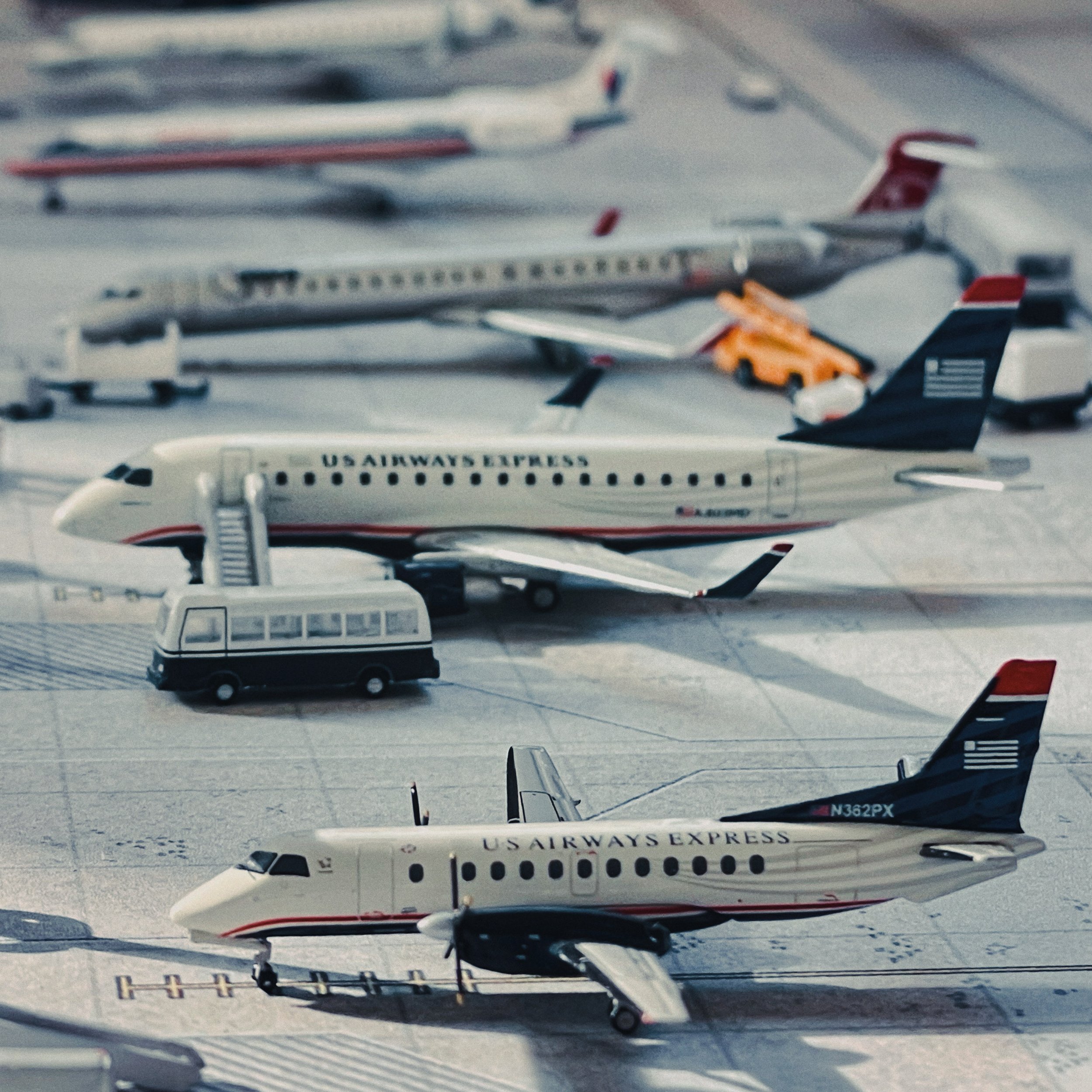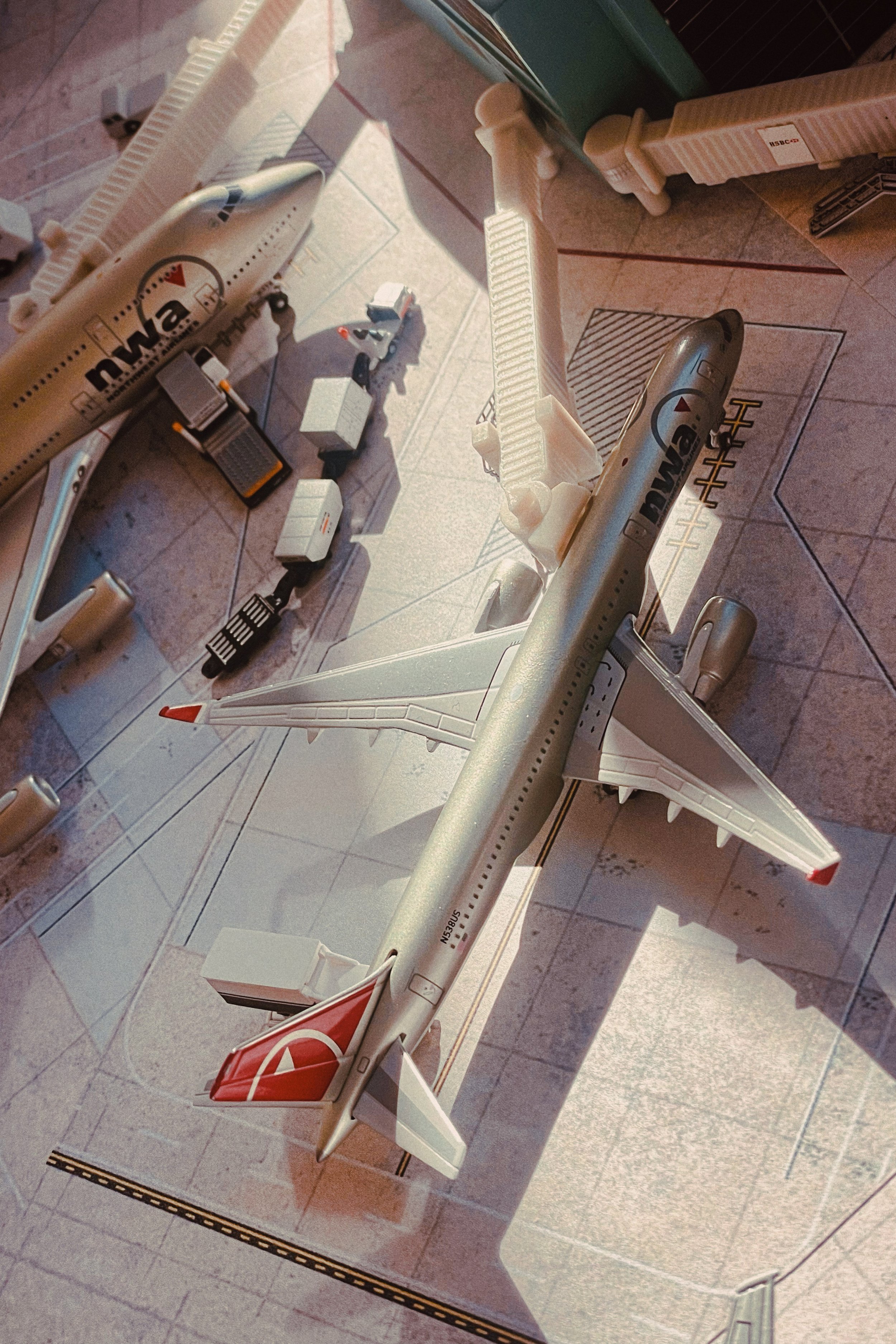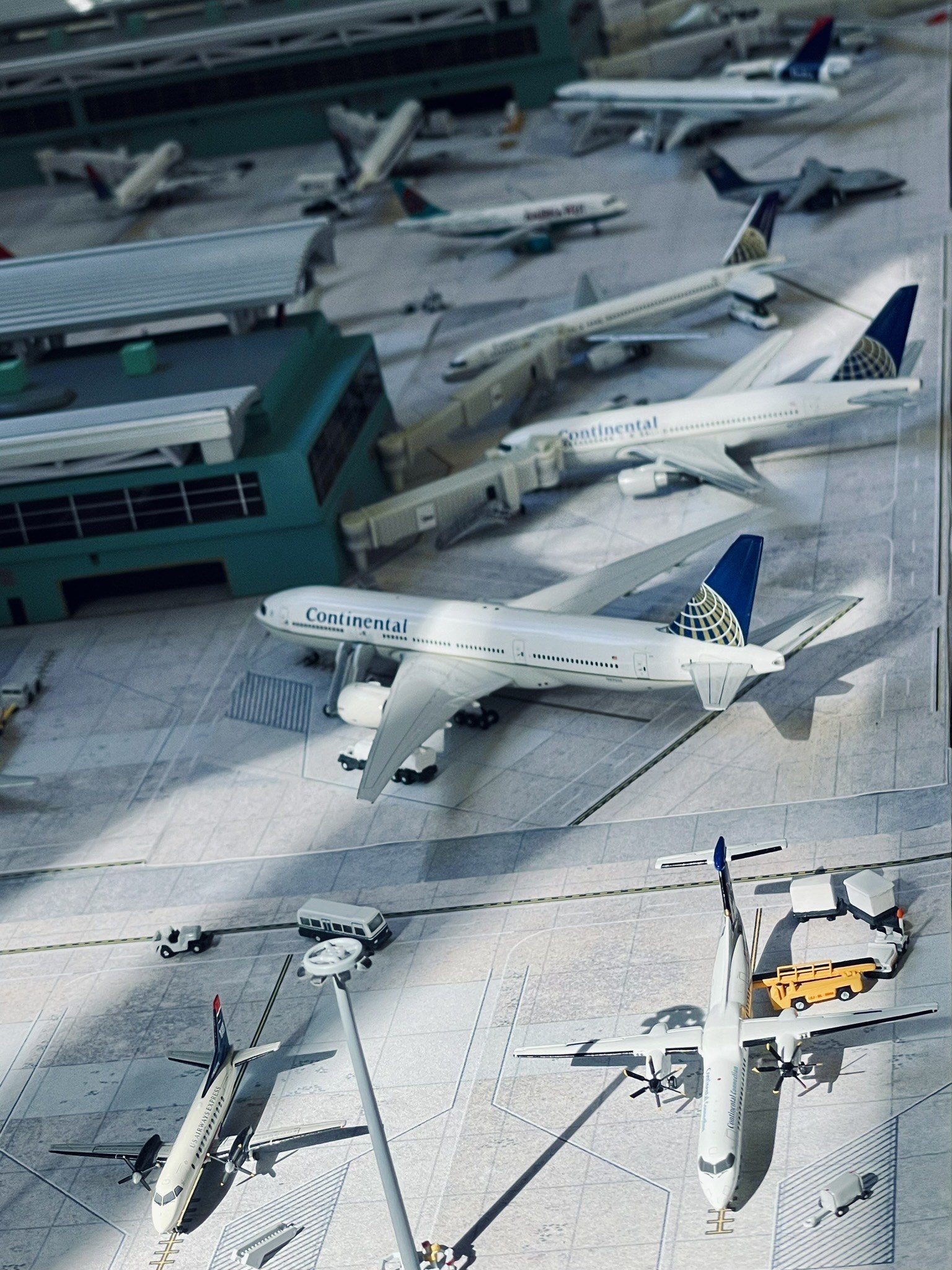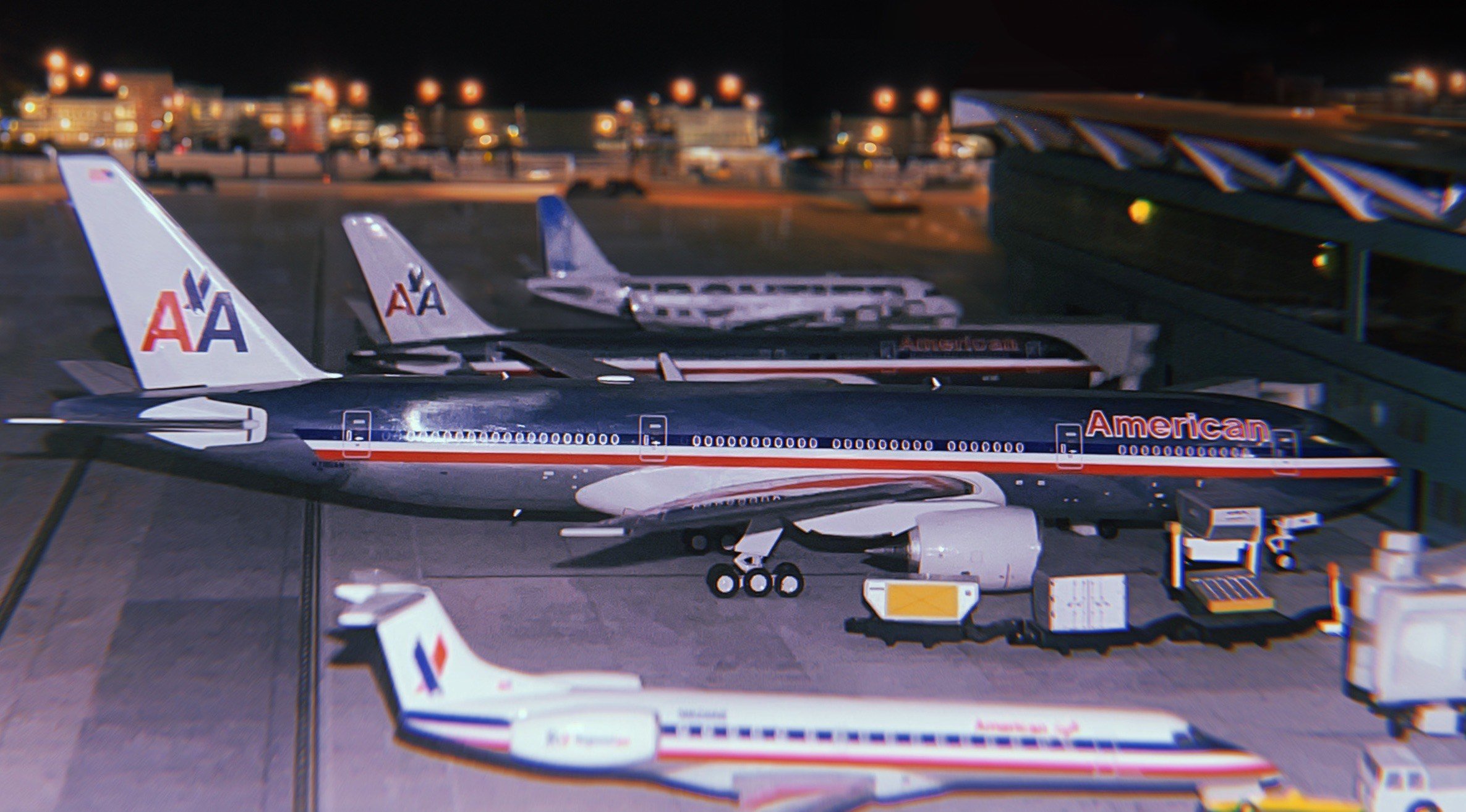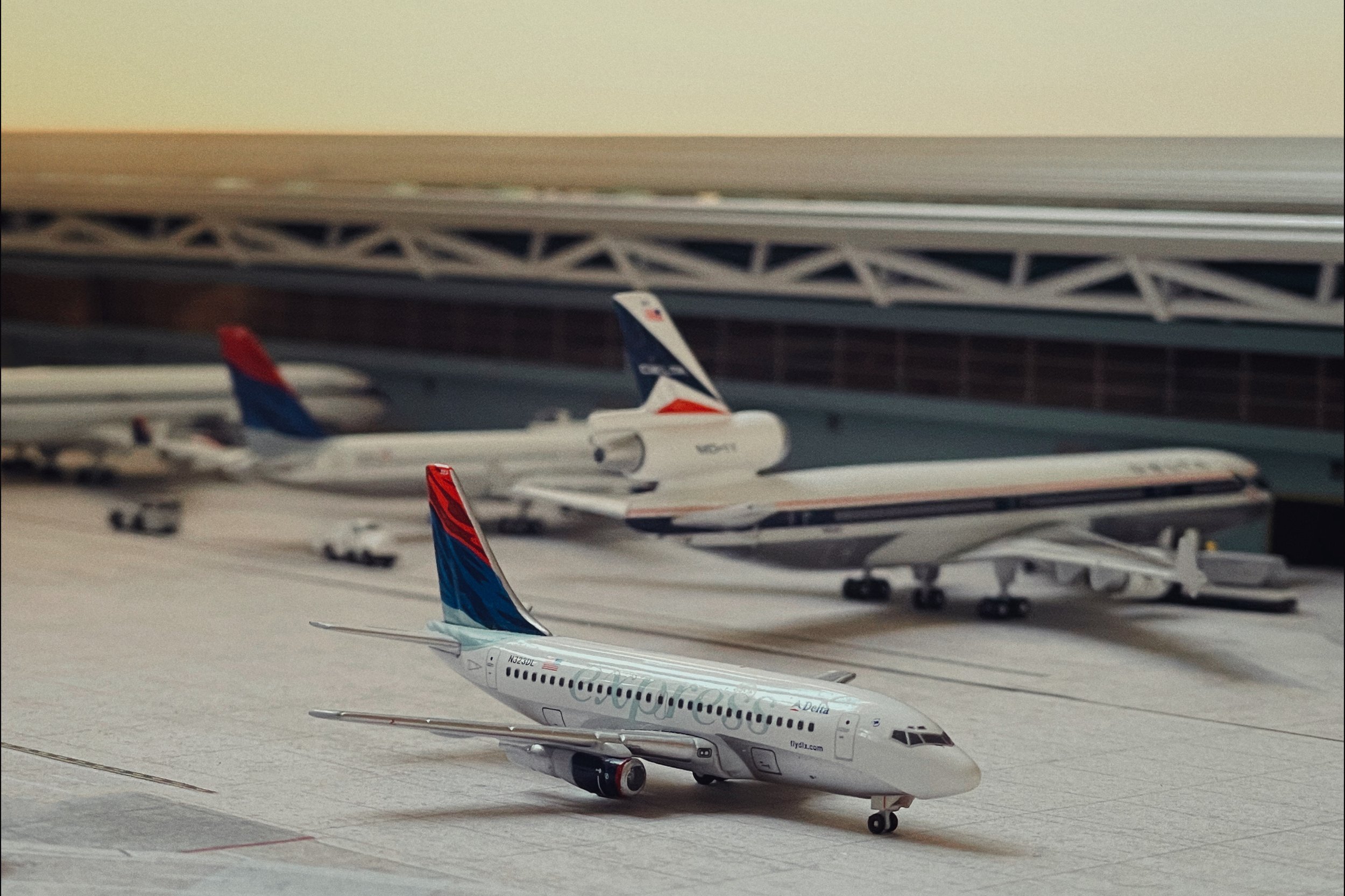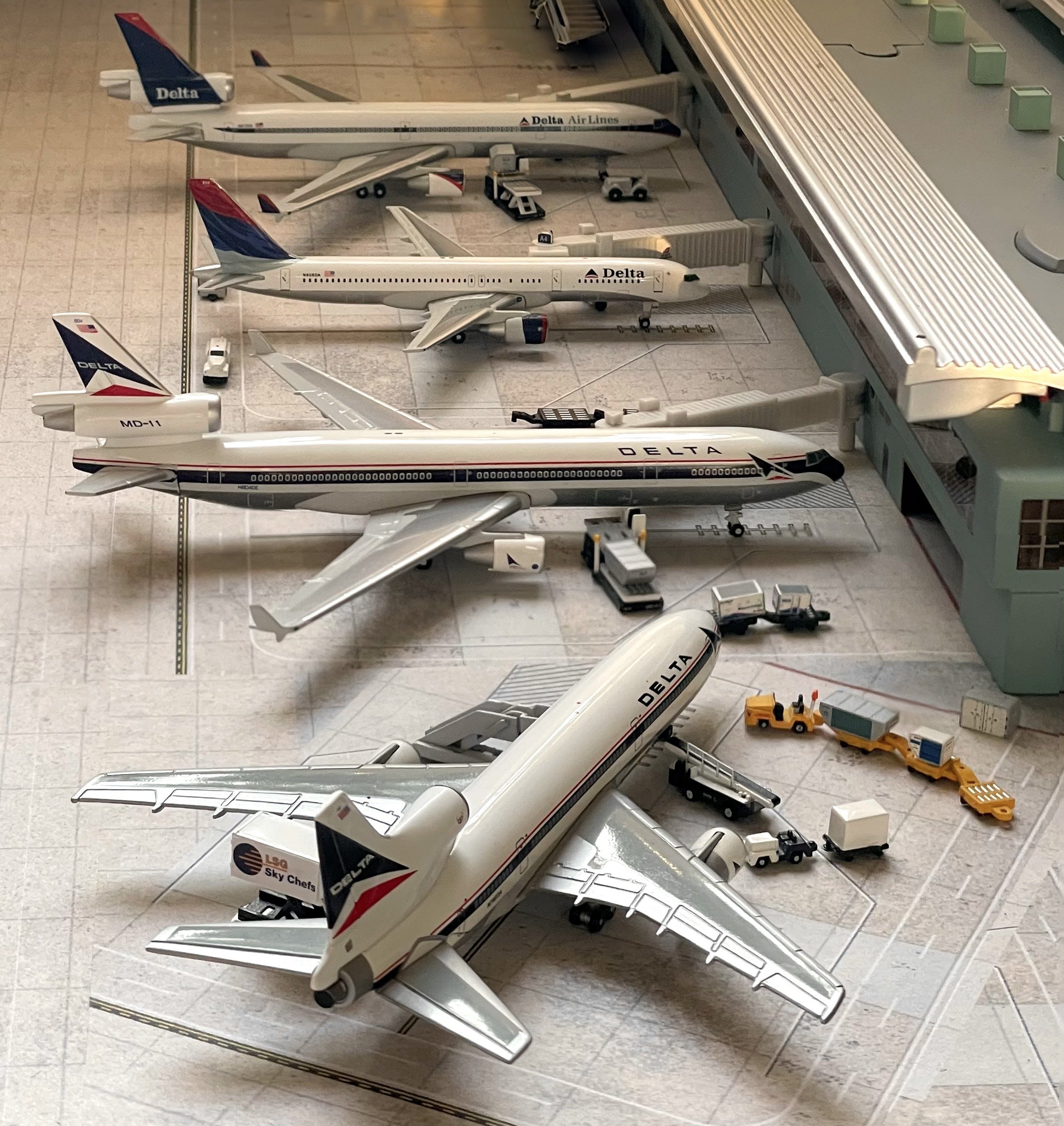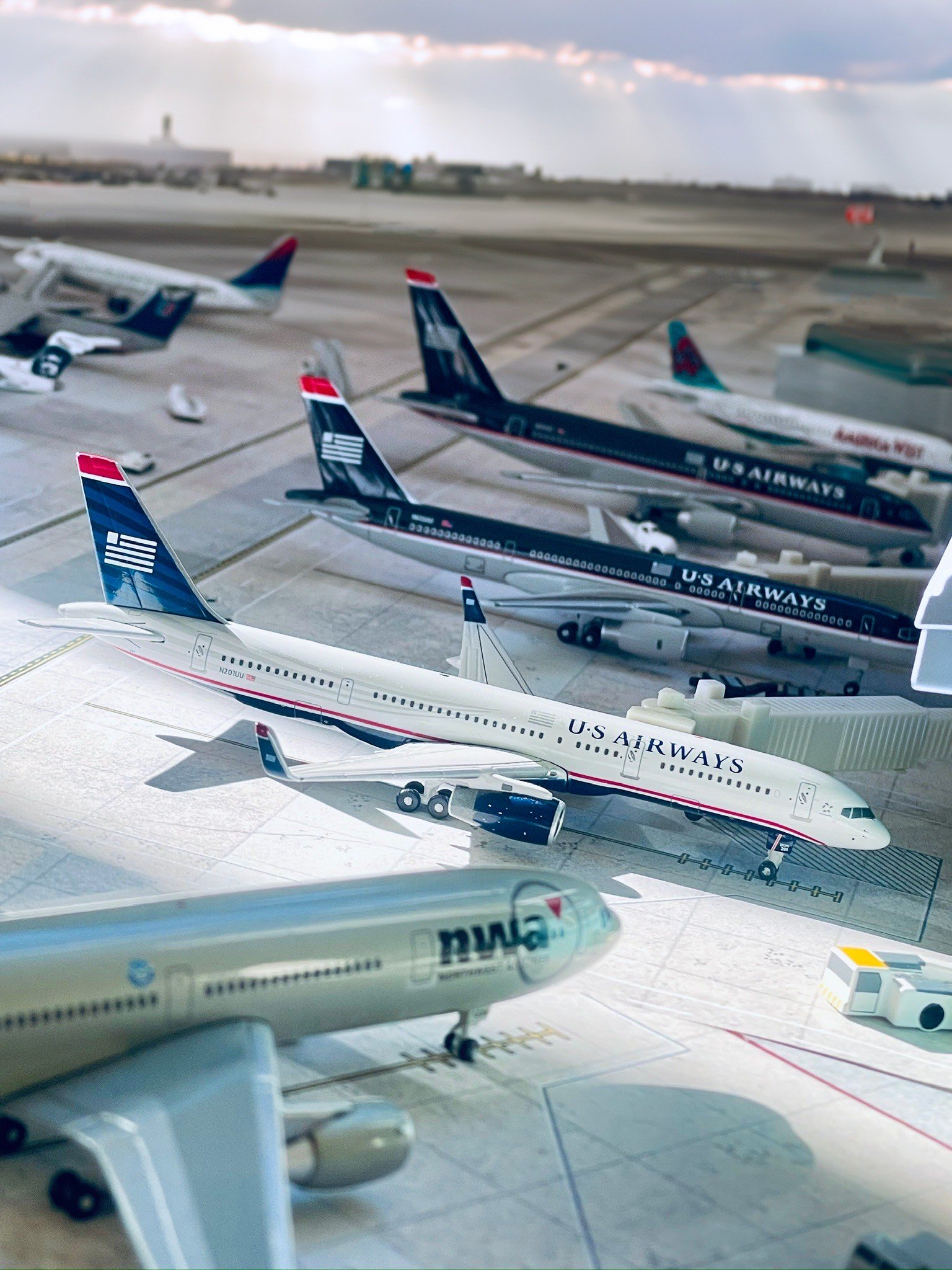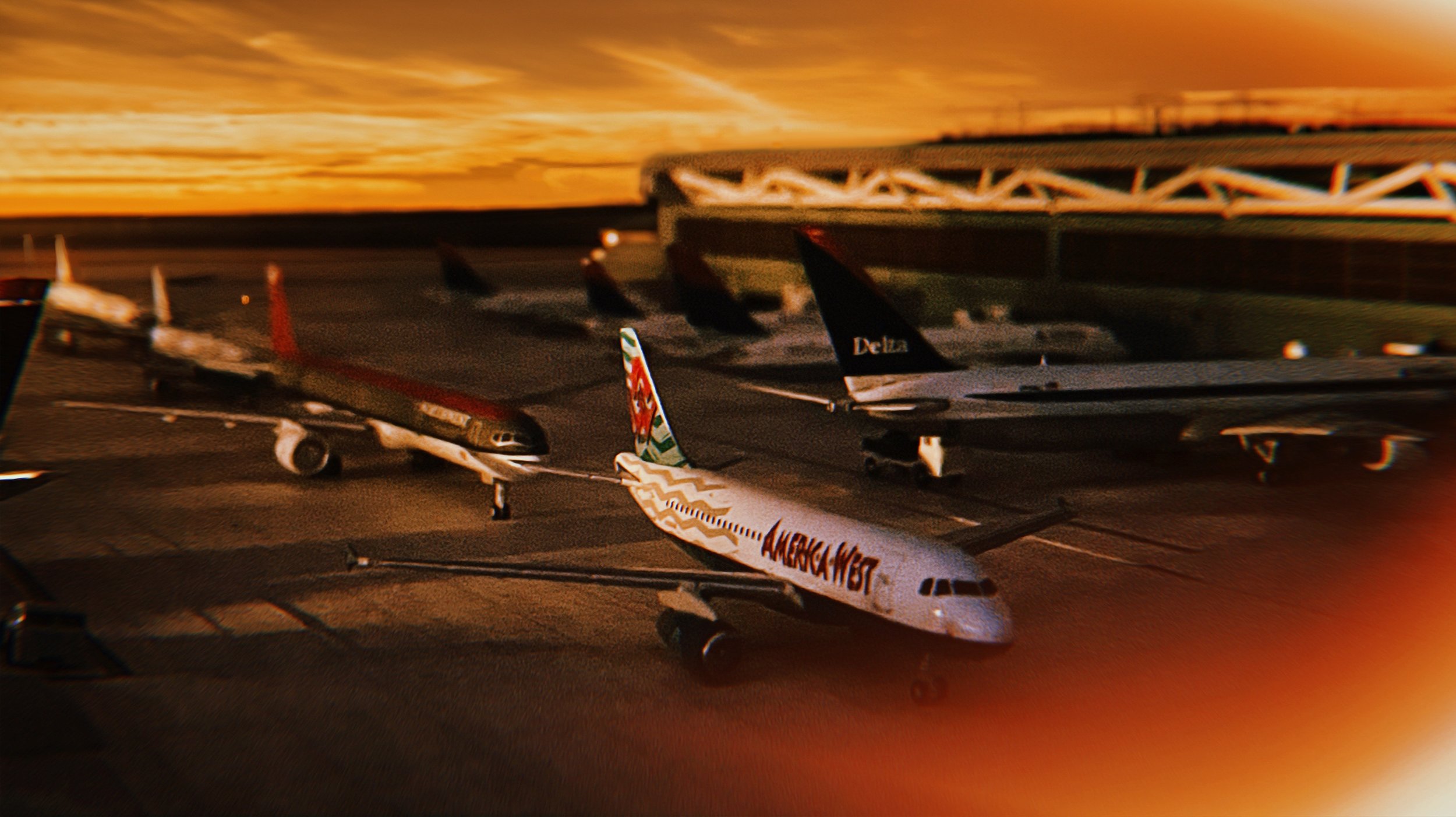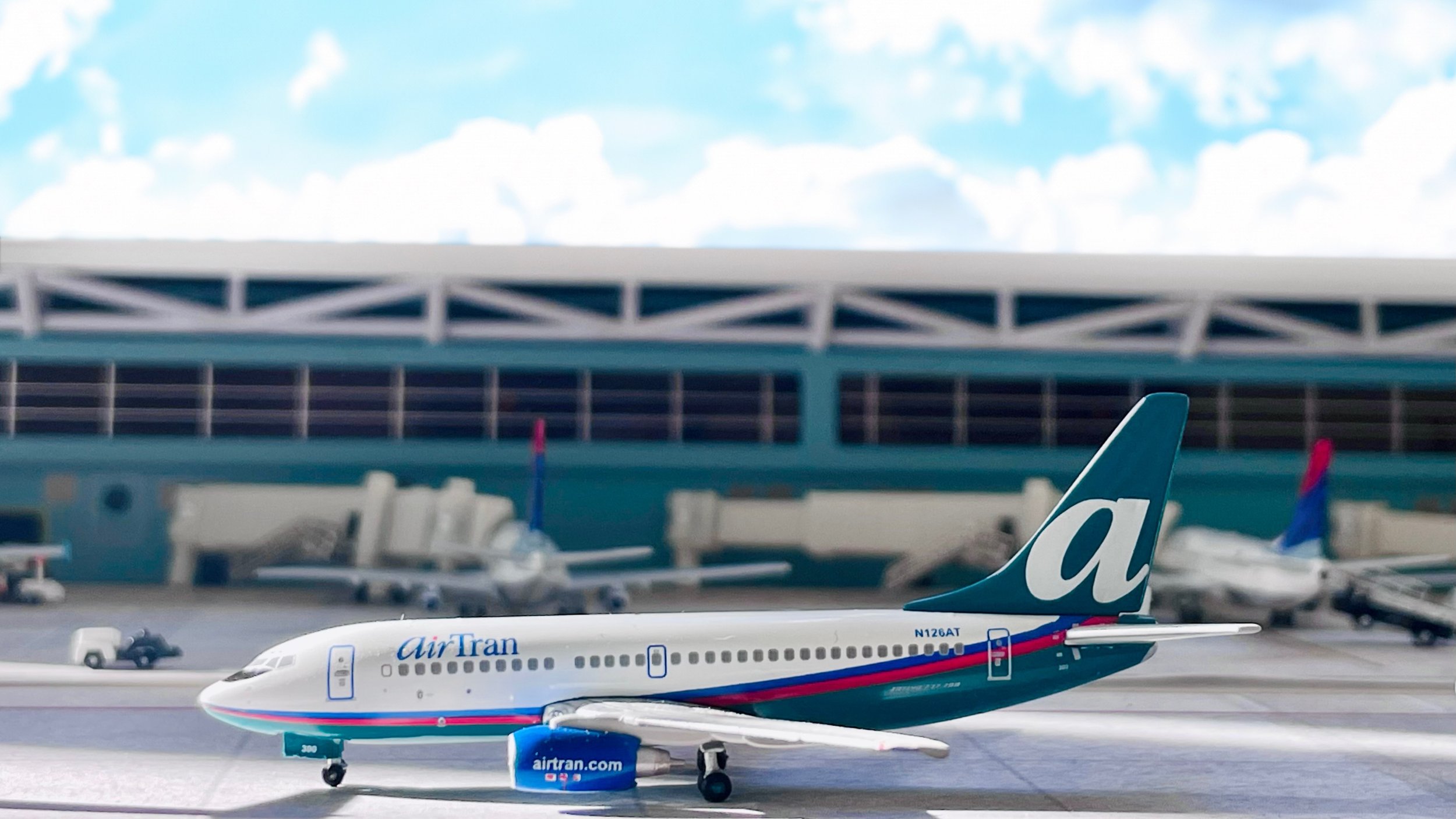Airliners, Nostalgia, and the Design of late 90’s/early 2000’s American Airports
Somewhere in the American Southwest, circa 2005.
Aviation has always been a major passion of mine, especially commercial aviation. The world of airports, and their logistics in regards to moving people, goods, and ultimately aircraft, is awe inspiring to me. The intricate ecosystem of ground service vehicles, ground crew, mechanics, air traffic controllers, and pilots working together to make people and goods move is a poetic dance of modern innovation and industrial beauty.
For over 15 years, I have been collecting diecast model airliners, mainly in the 1:400 scale. For me, diecast model collecting is a nostalgic, and therapeutic exercise, as I work to recreate the memories of my childhood with my own airport dioramas. Many of the airlines and aircraft of my childhood are long gone, but their memory can live in my collection, and through my photography.
As I’ve moved into my own apartment in college, I’ve finally had my own space to actively pursue my hobby more, giving me a proper place to display my models. Slowly but surely, I have been working to expand my airport diorama in my living room, using all the technology available to me to design and build the most realistic scale model I can of a late 90’s/early 2000’s American Airport. I’ve built this airport from the ground up with a combination of pre made scenery and home crafted 3d printed components, over a digitally designed parking and taxing apron.
I’ve taken up the hobby of photographing, and editing my airport photos to appear as realistic as possible. To me, there is something immensely satisfying of creating realistic depictions of the everyday movement and action of an airport tarmac. With modern manufacturing technology, model aircraft, many of which are no more than several inches long, are more detailed than ever, as well as the ground equipment and service gear sold with them that are no larger than a thumb tack.
To me, there is a great joy extracted from spending time every day delicately moving around the aircraft on my diorama, imagining where specific aircraft are heading, and setting a scene. Like I set up a digital painting in Photoshop or a render environment in Blender, in my airport, I control the action. Which planes are pushing back, which cargo loaders are moving parcels, which fuel tankers are returning to the garage to refuel. It’s like setting the scene to a play or movie, and waiting for the right natural light to wash over my set piece to make the best photos. Then off the computer to Photoshop away my wall and room and introduce scenery to bring the photos alive.
A lot of my airport scenes recreate scenes from my childhood. The comforting yet dated early 2000’s design of Delta’s Colors in Motion Livery. The friendly presence of defunct airlines like America West and AirTran. Regional turboprops, McDonnell-Douglas jets, and overall a greater diversity in aircraft design and brand identities that have all faded as time marched on. In my airport, they all live on, like they do in my memories.
US Airways Express Regional Ramp: A Colgan Air Saab 340B pulls in beside a Republic E170.
A Northwest 757-200 and 747-400 sit at the gates loading passengers and cargo. Both wearing NWA’s final livery before their 2007 Merger with Delta. My all time favorite livery.
US Airways ramp circa 2007, a year after their merger with America West. A time when US Airways aircraft sported both the classic navy livery, alongside their updated livery and soon to be repainted America West fleet additions. Note, the middle left A320 (reg. N106US) would safety be ditched on the Hudson River by Sully Sullenberger only 2 years later.
Overhead at the Continental ramp. Colgan Air turboprops in the foreground with heavies in the background. A good overhead view of my airport layout.
An American 777 loads up with cargo for its trip to Tokyo. An American Eagle ERJ-145 is ready for pushback to Kansas City in the foreground.
A nice selection of low-cost carriers you’d see around 2010. In focus, a Frontier A318 bearing (no pun intended) the signature Grizwald the Bear tail, the main mascot of the Frontier brand at the time.
2002: Many of American’s jets still wear the TWA livery from the 2000 Merger. Northwest jets are scene in 3 different paint schemes.
A Delta Express 737-200 taxis to the gate.
It’s Atlanta, 2001. Delta’s brand identity is scattered between the classic Widget Livery (Tristar and MD-11 in the foreground), Interim “Ron Allen” livery introduced in 1997. named after the aforementioned Delta CEO (Furthest back), and the Colors in Motion Livery, Middle on the 757. The Tristar would be retired at the end of the year.
Summer, 1999. TWA takes delivery of its first Boeing 717. This particular one, N418TW would go on to fly with American, AirTran, and ultimately Delta which it still flies with to this day.
USAIR
Two classic jets, a British Aerospace Avroliner RJ-85 operated by Mesaba for NWA Airlink, and an NWA McDonnell Douglas DC-10-30.
Delta MD-88, a jet I frequented many times as a child.
Busy ramp at dawn, circa 1999.
AirTran 737-700, at ATL.


